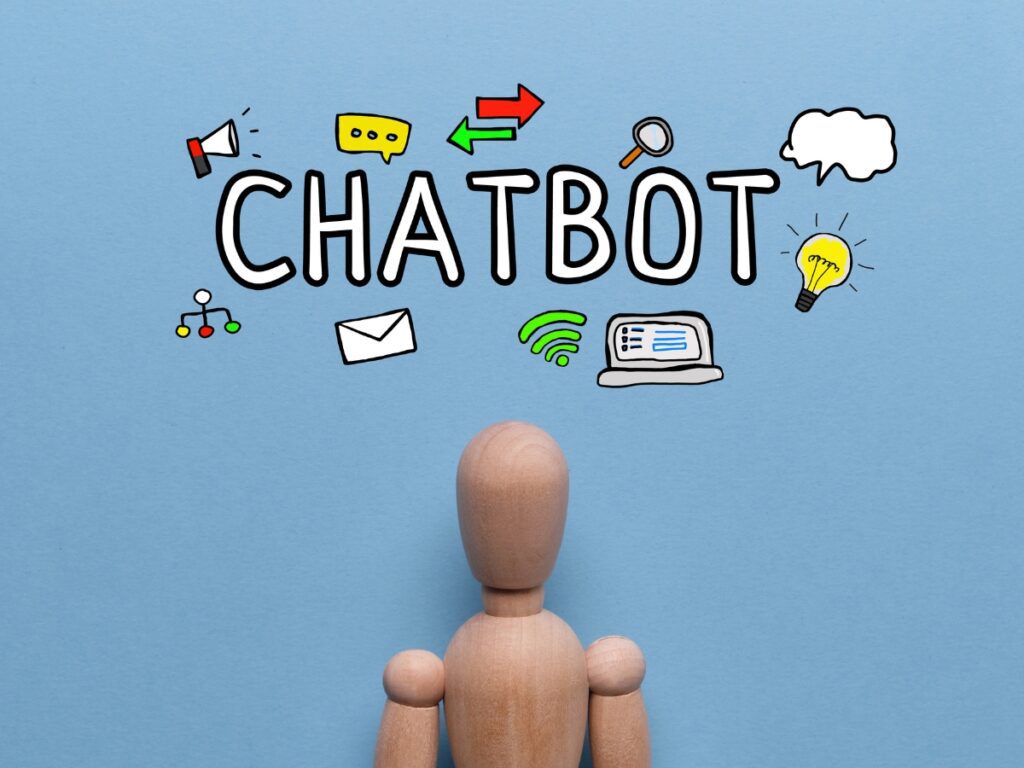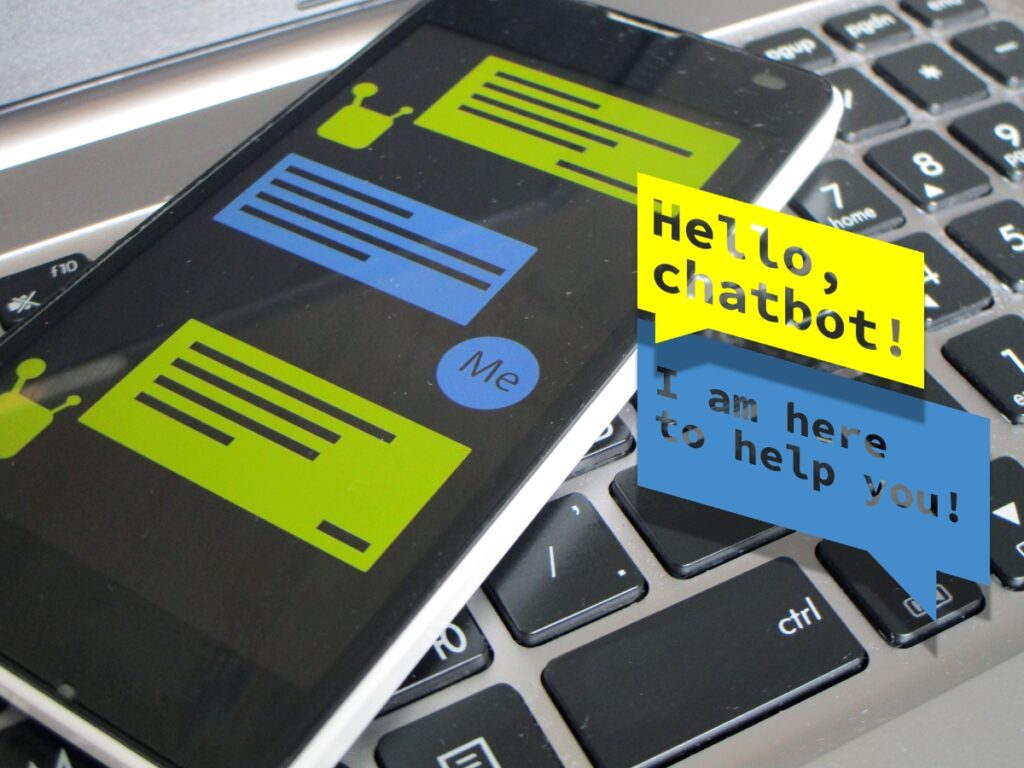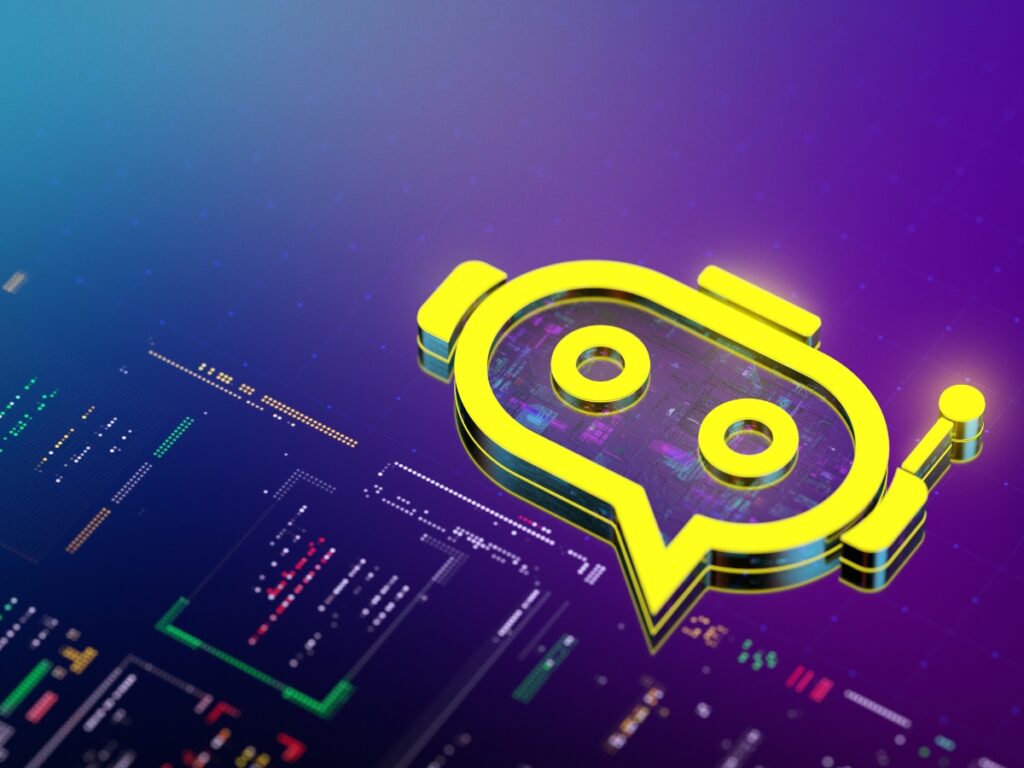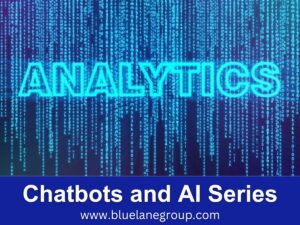This guide takes a comprehensive look at chatbot frameworks, the foundational tools that underpin the development and deployment of effective chatbots in the contemporary digital realm. We’ll delve into the intricacies of these frameworks, highlight their diverse applications, and showcase their pivotal role in facilitating seamless, intelligent chatbot experiences.
Quick Overview – For Those on the Clock:
- Chatbot frameworks serve as the architectural backbone for chatbot creation, offering predefined functionalities, structures, and protocols. These frameworks cater to rule-based and AI-driven chatbots, ensuring developers have the tools to craft bots tailored to specific user needs. With robust frameworks, developers can expedite chatbot development, ensure scalability, and integrate advanced features relatively easily.
- In the fast-paced world of chatbot technology, having a reliable chatbot framework is not just a luxury but a necessity. It equips businesses with the means to rapidly adapt to changing customer demands, streamline bot-related processes, and ensure consistent, high-quality user interactions. By leveraging the proper framework, organizations can propel their chatbot endeavors to new heights, driving engagement, loyalty, and operational efficiency.
Welcome to the twelfth Blue Lane Group article in the Best Chatbots for Customer Service: Blueprint for Success in 2023 series. These posts examine the essential chatbot topics of customer service automation, exploring how chatbots revolutionize interactions, enhance user satisfaction, and redefine the benchmarks for excellence in modern customer-centric businesses.
Disclosure: The digital products mentioned in this article are highly regarded in the marketplace and are endorsed by the Blue Lane Group staff. We may earn a commission at no additional cost if you purchase through the provided links.
Table of Contents

Introduction: Exploring Chatbot Frameworks
Chatbots have emerged as powerful tools for businesses and individuals in the digital age, creating dynamic interaction and automation avenues. With the rapid growth in Artificial Intelligence (AI) and Natural Language Processing (NLP), chatbot frameworks have become the building blocks for many conversational interfaces.
These frameworks are more than mere tools; they represent a shift in how we think about, design, and deploy interactive platforms.
The Intersection of Technology and Interactivity
We’re diving into the nexus of technology and user engagement when discussing chatbot frameworks. These frameworks employ the latest AI and NLP, offering capabilities ranging from simple scripted responses to advanced contextual conversations.
The beauty lies in the seamless fusion of automated intelligence and human-like interactivity. As platforms like Botpress and Dialogflow exemplify, creating bots that understand, learn, and adapt is possible, offering users a richer, more personalized experience.

The Core Advantages of Implementing Chatbot Frameworks
At their core, chatbot frameworks are about efficiency, scalability, and personalization. By adopting a suitable framework, businesses can ensure a more tailored user experience that resonates with their audience’s needs and preferences.
The versatility of frameworks like Botsify and Bottr means that even those without a technical background can jump into chatbots. From improved customer support to data-driven insights, the advantages are manifold.
Ensuring 24/7 Customer Engagement
One of the undeniable boons of chatbots is their ability to ensure uninterrupted customer engagement. Bots are ever-present, unlike human agents who might be bound by time zones or work hours.
Whether you’re using MobileMonkey for marketing campaigns or ChatterBot for machine-learning-driven interactions, chatbots offer a 24/7 touchpoint. This constant availability translates to faster issue resolution, instant responses, and a user experience that feels constantly attended to.

Multi-Tasking Efficiency with Accuracy
In a world where time is money, the ability of chatbots to handle multiple tasks simultaneously stands out as a remarkable asset. With the right chatbot frameworks, businesses can delegate repetitive and time-consuming tasks to bots, freeing up human resources for more strategic endeavors.
Whether answering FAQs, processing orders, or guiding users through a complex process, chatbots excel in multi-tasking. Platforms like BotUI and Bottr showcase this prowess, able to handle thousands of interactions at once, all while ensuring a high degree of accuracy.
These chatbot frameworks enhance operational efficiency by reducing human errors and streamlining processes.
The Cost-Effective Nature of Chatbot Solutions
Adopting chatbot solutions isn’t just about leveraging technology for superior user engagement; it’s also an astute financial decision. With tools like Botsify and Wit.ai, even small businesses can deploy sophisticated chatbots without incurring hefty development costs.
Automating mundane tasks results in significant savings in person hours and operational expenses. Moreover, the scalability of frameworks like Rasa and TARS means businesses can handle increased traffic without proportionally growing costs.
These savings accumulate, making chatbots both a technologically advanced and cost-effective solution.

Top 10 Chatbot Frameworks for Enhanced Interactivity
The vast landscape of chatbot technology is dotted with numerous frameworks, each offering unique capabilities and advantages. For businesses venturing into the world of chatbots, choosing the proper framework can be the difference between a mediocre bot and a stellar one.
The choices are varied from open-source platforms like Botpress to AI-powered giants like IBM Watson.
Whether you’re looking for natural language processing, multi-channel integration, or simple drag-and-drop bot creation, there’s a framework tailored to your needs. The evolution of these tools ensures that businesses can find a framework aligning with their objectives and budgets.
1. Botpress: The Open-Source Champion
Botpress has carved a niche as a premier open-source solution in chatbot frameworks. This distinction means developers and businesses can tailor the framework to their requirements. With strong community backing and regular updates, Botpress ensures users can access the latest chatbot technology.
Its modular architecture allows for easy integrations and expansions, making it a favorite among developers who prioritize flexibility and customization. For businesses eyeing a blend of robustness and adaptability, Botpress emerges as a leading contender.
2. Botsify: Creating Bots Made Easy
One of the challenges many businesses face when diving into the chatbot realm is the daunting task of bot creation, especially if they lack coding expertise. Botsify emerges as a game-changer in this regard. With its intuitive drag-and-drop interface, creating chatbots becomes a breeze, even for those without a technical background.
Its platform is designed to cater to various industries, making it versatile and adaptable. Integration with multiple platforms and its user-friendly approach make Botsify an excellent choice for businesses looking to deploy chatbots without a steep learning curve.

3. Bottr: Data-Driven Interactivity
In the age of big data, harnessing the power of information to enhance user interaction is paramount. Bottr epitomizes this concept with its unique ability to pull data from diverse sources to fuel chatbot conversations. By doing so, it ensures that interactions are not just engaging but also informative and relevant.
Businesses can tap into databases, web services, and other data streams to make their chatbot interactions dynamic and tailored to individual users. With Bottr, data-driven decision-making finds a new ally in the quest for superior user engagement.
4. BotUI: User-Friendly Conversational UI
Conversations are the heart of any chatbot experience, and BotUI shines in this domain. A JavaScript framework at its core, it offers developers a simple API to craft conversational user interfaces. Its focus is on ensuring that users have an intuitive and natural conversation flow, regardless of the complexity of the underlying bot logic.
With customizable themes and a range of plugins, BotUI provides a toolkit for developers to shape unique and engaging chatbot interfaces. For businesses that prioritize user experience, BotUI stands out as an ideal choice.
5. ChatterBot: Conversation with Machine Learning
Delving into machine learning, ChatterBot brings a Python-based framework that dynamically evolves its conversational capabilities. Instead of relying on static, predefined pathways, it learns from each interaction, refining its responses over time.
This continuous learning ensures that the chatbot remains relevant and grows more accurate and engaging with each conversation. By integrating machine learning algorithms, ChatterBot offers a solution for businesses seeking an adaptable and intelligent chatbot that matures with every user interaction.

6. Dialogflow: A Blend of Usability and Integration
In the ever-expanding ecosystem of chatbot frameworks, Dialogflow holds a distinguished position, primarily due to its impeccable blend of user-friendliness and robust integration capabilities. Powered by Google, this platform provides developers with a holistic environment to craft, test, and deploy conversational agents.
Its natural language processing (NLP) engine efficiently understands and processes user input, ensuring that interactions are fluid and meaningful. But where Dialogflow truly shines is its seamless integration potential with a plethora of platforms, be it Google Assistant, Facebook Messenger, or even IoT devices.
This integration capability ensures businesses can reach their audiences wherever they are, making Dialogflow a pivotal tool in any chatbot developer’s arsenal.
7. IBM Watson: Where Machine Learning Meets NLP
The name IBM Watson evokes images of cutting-edge technology and innovation, and its chatbot framework is no exception.
Merging the power of machine learning with the nuances of natural language processing, IBM Watson offers a chatbot experience like no other. Its deep learning algorithms continually adapt, refine, and evolve based on interactions, ensuring that user queries are addressed with increasing accuracy over time.
Furthermore, its cognitive capabilities allow it to understand context, sentiment, and intent, giving it an edge in crafting more human-like responses. IBM Watson is an impeccable choice for businesses looking for a sophisticated, intelligent, and continuously evolving chatbot solution.

8. Microsoft Framework: Tools for Every Developer
Microsoft’s presence is undeniable in software, and its foray into chatbot frameworks proves its commitment to this burgeoning field. The Microsoft Bot Framework offers a robust set of tools tailored for developers of all skill levels.
The framework is comprehensive, from integrating with Microsoft’s cognitive services for enhanced bot capabilities to providing a rich SDK for bot development. Its versatility allows for simple chatbots and complex conversational agents powered by machine learning.
With extensive documentation, community support, and integration with Azure services, the Microsoft Bot Framework provides a sturdy foundation for any chatbot project.
9. MobileMonkey: A Multi-Channel Approach
In today’s digital age, users interact with brands across multiple channels, and MobileMonkey ensures that businesses remain at the forefront of all these interactions. Positioned as an omni-channel platform, MobileMonkey enables businesses to create chatbots that function seamlessly across different channels – web, social media, or messaging apps.
Its intuitive interface and powerful chatbot-building tools ensure companies can craft effective chatbots without a steep learning curve. Furthermore, its focus on marketing, sales, and support ensures that chatbots deliver tangible business results. For organizations seeking a comprehensive, multi-channel chatbot solution, MobileMonkey stands out as a prime contender.

10. Pandorabots: Custom Conversations with AIML
In the world of chatbot creation, Pandorabots occupies a unique niche. Standing distinctively apart, it facilitates the development of chatbots using AIML (Artificial Intelligence Markup Language) – a specialized markup language for creating natural language software agents.
This allows for greater customization, precision, and depth in a bot’s conversations. Whether crafting simple interactions or diving deep into complex conversational scenarios, Pandorabots offers unparalleled flexibility.
As businesses seek to provide more prosperous, more personalized user experiences, the bespoke conversation capabilities offered by Pandorabots make it an invaluable tool in the chatbot landscape.

Diving Deeper: Comparing Popular Frameworks
The proliferation of chatbot frameworks presents businesses with a delightful challenge: which one to choose? To make informed decisions, diving deeper and making side-by-side comparisons is imperative. Different frameworks offer varying capabilities, integrations, and scalability options.
While some are geared towards those without coding skills, others cater to seasoned developers seeking advanced functionalities. Making the right choice can significantly influence a business’s chatbot strategy and success.
Dialogflow vs. Microsoft Framework
When weighing Dialogflow against the Microsoft Bot Framework, several facets emerge. Dialogflow, with its Google lineage, boasts a user-centric design ethos, emphasizing usability and expansive integration capabilities. Its NLP engine is adept at understanding and processing varied user inputs.
On the other hand, the Microsoft Bot Framework comes with the extensive might of Microsoft’s ecosystem. It offers a broad array of tools, catering to novices and expert developers, and integrates seamlessly with Microsoft’s cognitive services suite.
Each framework has its strengths, and the choice often boils down to specific business needs and the desired level of customization.

The Comparative Insights of Rasa and IBM Watson
Rasa and IBM Watson stand as titans in the chatbot arena, yet they cater to different needs. Rasa, an open-source machine learning framework, allows developers to build contextual AI chatbots from the ground up. Its emphasis on customization ensures that bots can be finely tuned to specific business contexts.
Combining machine learning with NLP, IBM Watson is a powerhouse of sophistication. Its cognitive capabilities allow it to delve deep into user sentiment and intent, facilitating nuanced interactions.
While Rasa offers more granular control, IBM Watson provides tools for rapid yet advanced chatbot deployment—their choice hinges on the balance between customization and out-of-the-box capabilities that a business seeks.
Essential Considerations for Selecting a Framework
In the vast realm of chatbot development, selecting the ideal framework can appear daunting. However, businesses can make informed decisions by focusing on a few crucial considerations. First and foremost, it’s vital to recognize the exact needs and goals the chatbot aims to fulfill.
Are you looking for a simple Q&A bot or something more intricate with complex workflows? The complexity and nature of the tasks you want your bot to achieve will significantly influence the framework choice. Additionally, consider factors like platform compatibility, integration possibilities, and the amount of customization required.
Finally, factor in the long-term perspective: how easy is it to update and maintain bots using the chosen framework?
Aligning Frameworks with Business Objectives
A chatbot’s success isn’t merely gauged by its technical prowess but by how well it aligns with business objectives. This alignment is paramount. Whether the goal is to enhance customer support, drive sales, or engage users more effectively, the chosen framework should facilitate those goals seamlessly.
For instance, if lead generation is a primary aim, frameworks with robust data capture and analytics tools, like TARS, might be more appropriate. AI-driven frameworks like IBM Watson or Rasa can be more apt for businesses prioritizing deep customer engagement and personalized interactions.
The chosen framework should be technically competent and resonate with the broader business strategy.
Scalability & Flexibility: Key Determinants
As businesses evolve, so do their needs. The chatbot framework that’s perfect for a startup might not necessarily cater to the growing demands of an expanding enterprise. Scalability is, therefore, a cornerstone consideration.
How well can the chatbot handle increased user loads, and how adaptable is it to emerging business scenarios? Flexibility, on the other hand, pertains to how effortlessly one can modify or enhance the bot’s functionalities.
Some platforms, like Botpress or Wit.ai, offer scalability and flexibility, ensuring that the chatbot remains a robust tool even as business dynamics shift.

Frequently Asked Questions on Chatbot Frameworks
Chatbot frameworks, while immensely beneficial, can spark many questions, especially for those new to the domain. Common queries include the technical expertise required for different platforms, costs, and integrations offered.
Others wonder about the security features embedded within these frameworks, especially when dealing with sensitive user data. Then there are considerations about multi-platform support – can the bot efficiently function across web, mobile, and various social media channels?
Addressing these frequently asked questions and understanding each framework’s unique features and limitations can guide businesses toward making an informed, impactful choice.

Maximizing Efficiency with the Right Framework
In the digital realm, efficiency isn’t just about speed; it’s about achieving desired outcomes with minimal waste of time, resources, or effort. Selecting the appropriate chatbot framework plays a pivotal role in this. A well-chosen platform can streamline interactions, automate repetitive tasks, and provide insights that fuel continuous improvement.
For instance, Dialogflow and IBM Watson have machine-learning capabilities that allow the chatbot to learn from interactions and refine its responses over time. On the other hand, platforms like Botpress offer extensive customization, enabling businesses to tailor their bots precisely to their needs.
Thus, by understanding the unique strengths of each framework, organizations can truly maximize the efficiency of their chatbot initiatives.
No Coding Knowledge? No Problem!
The chatbot universe has expanded significantly, and thankfully, it now caters to both coding maestros and complete novices. Several frameworks have democratized chatbot creation, ensuring that even those without a technical background can craft functional and interactive bots.
Botsify, for instance, offers drag-and-drop tools, making the bot creation process almost as straightforward as sketching out a flowchart. Similarly, TARS enables businesses to build chatbots without delving into coding intricacies.
The key takeaway? In today’s age, chatbot development is not confined to the tech-savvy. With the right tools, anyone can jump aboard the chatbot train and harness its immense potential.

Navigating the Future with Optimal Chatbot Solutions
The chatbot landscape is dynamic, with innovations constantly reshaping the status quo. As AI and machine learning technologies evolve, the capabilities of chatbots will only amplify. Staying abreast of emerging trends and advancements is essential to navigate this ever-changing terrain.
More than just tools for customer service, future chatbots might play pivotal roles in areas like data analysis, predictive modeling, and even workforce training. By choosing a flexible and forward-compatible framework like Rasa or MobileMonkey, businesses can ensure that they remain at the forefront of this digital revolution.
The goal is clear: to create bots that are not just reactive but proactive, heralding a new era of interactive digital solutions.

Conclusion: Mastering the Art of Interactive Bots
As we journey deeper into the digital age, interactivity is a linchpin for technology success. With their blend of AI, machine learning, and natural language processing, Chatbots swiftly embody this interactivity. They are not mere communication tools but reflections of how businesses understand, empathize and respond to their users.
Exploring various chatbot frameworks has provided a glimpse into this space’s sheer diversity and capability. While each framework has unique features and strengths, a common thread binds them: pursuing more genuine, responsive, and human-like interactions. As developers and businesses delve deeper into these frameworks, the line between human and machine communication blurs further, leading us to a future where chatbots might be indistinguishable from human interlocutors.
However, mastering interactive bots’ art goes beyond selecting the proper framework. It’s about understanding the evolving needs of the end-users, the nuances of human communication, and the importance of continuous learning and adaptation. Feedback loops will shape future bots, where each interaction refines the next, leading to an ever-improving communication cycle.
As we stand on the cusp of this transformative phase, it’s vital to approach chatbot development as a technological endeavor and an art form. An art that melds the precision of technology with the fluidity of human conversation. By nurturing this synergy, we pave the way for a future where chatbots play a pivotal role in connecting businesses with their users, fostering meaningful and lasting relationships.

You Might Also Like
If you enjoyed this article and received value from it, check out the other Blue Lane Group articles in the Best Chatbots for Customer Service: Blueprint for Success in 2023 series:
- Chatbot ROI: Unlock Unmatched Profits with Top 5 Strategies for Optimization
- Omnichannel Chatbots: Unlock Consistent Engagement with 7 Best Practices
- Chatbot KPIs: 10 Essential Metrics to Drive Optimal Results
- Multilingual Chatbots: Break Language Barriers with 8 Leading Solutions
- Enterprise AI Chatbot Solutions: 7 Key Tools to Supercharge Your Business
- Mastering Chatbot Training: 7 Strategies for Optimal User Engagement
- Chatbot APIs: 6 Leading Options for Seamless Functionality
- Chatbot Scripts: 9 Proven Strategies to Boost Conversions and Engagement
- Rule-Based Chatbots: Drive Consistent Responses with Top 9 Benefits
- Chatbot Success Metrics: Unlock Optimal Performance with Top 10 Insights
- Chatbot Analytics: Drive Excellence with 10 Essential Tools
- Mastering Interactivity: Top 10 Chatbot Frameworks Explored
- Chatbots in Retail: 7 Winning Strategies for Elevated Customer Engagement
- Chatbots for Lead Generation: 6 Best Practices to Transform Your Funnel
- Chatbot Integrations: 6 Essentials for Enhanced Productivity and Operations
- Chatbot UX: Enhance Engagement with These 8 Vital Principles
- Chatbot Security: 7 Essentials to Safeguard Your Business
- Chatbot Development Services: 7 Must-Knows to Boost Your ROI
- Chatbots in Healthcare: 6 Leading Innovations Revolutionizing Patient Care
- NLP for Chatbots: Top 6 Techniques Transforming Chat Experiences
- Benefits of Chatbots in Customer Service: 7 Key Sales Boosters
- 7 Essential Social Media Chatbots for Unmatched Engagement
- Building Chatbots Powered by AI: 5 Proven Techniques for Epic Profits





